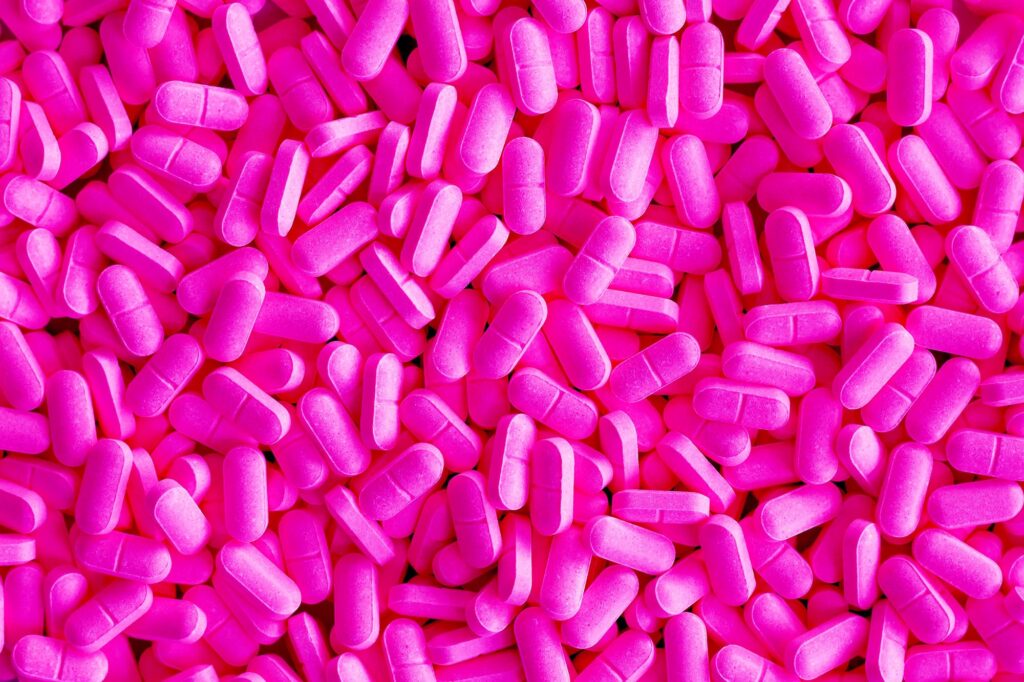If you’re going through kratom withdrawal, you may be looking for relief in your medicine cabinet. One option that often comes up is Benadryl for kratom withdrawal — this widely used over-the-counter antihistamine is sometimes suggested as a possible solution during this difficult time.
Kratom withdrawal can be overwhelming. The physical and emotional symptoms can make it challenging to sleep, eat, or function normally. Many individuals experience anxiety, muscle pain, and strong cravings that can disrupt their recovery process.
Managing these withdrawal symptoms is not only about finding comfort – it is essential for a successful recovery. When withdrawal symptoms become too severe, the risk of relapse significantly increases. This is why it is so important to find effective strategies for relief.
While Benadryl may appear to be an easy fix, it is crucial to understand both its potential benefits and limitations. In this article, we will examine how this common medication fits into the larger picture of managing kratom withdrawal and what you need to know in order to make informed choices about your recovery.
Understanding Kratom Withdrawal
Kratom, derived from a Southeast Asian tree (Mitragyna speciosa), acts as a natural substitute for opioids. Many people use kratom to manage pain or transition away from stronger opioids, often unaware of the potential risks of developing dependence on it.
The withdrawal experience can be difficult, with symptoms usually starting 12-24 hours after the last dose:
Physical Symptoms
- Intense muscle aches and cramping
- Profuse sweating
- Runny nose and watery eyes
- Nausea and vomiting
- Diarrhea
- Tremors
Psychological Effects
- Severe anxiety
- Depression
- Intense cravings
- Sleep disturbances
- Mood swings
- Irritability
These symptoms are similar to those experienced during traditional opioid withdrawal, although they are often less severe than withdrawal from heroin or oxycodone. For a deeper understanding of what opiate withdrawal is really like, you can explore more about it.
Like other opioids, regular use of kratom leads to tolerance – meaning higher doses are needed to achieve the same effects. This tolerance can develop quickly, sometimes within weeks of consistent use.
Your brain adjusts to the presence of kratom by reducing its own production of opioids. When you stop using kratom, this disruption in brain chemistry results in withdrawal symptoms until your body readjusts. This physical dependence can occur regardless of the reason you started using kratom, whether it was for managing pain, relieving anxiety, or other purposes.
What is Benadryl and How Can It Help with Kratom Withdrawal Symptoms?
Benadryl (diphenhydramine) is a widely available over-the-counter antihistamine primarily used to treat allergy symptoms like sneezing, runny nose, and itchy eyes. Its sedating properties have made it a popular choice for off-label uses, particularly as a sleep aid.
Many people experiencing kratom withdrawal turn to Benadryl for relief due to its:
- Sleep-inducing effects: The medication can help combat insomnia and restlessness common during withdrawal
- Anti-nausea properties: Its sedative nature may reduce feelings of nausea and discomfort
- Accessibility: Available without prescription at most pharmacies and stores
- Known safety profile: Decades of use have established clear guidelines for dosing and side effects
During kratom withdrawal, Benadryl may help regulate sleep patterns by making it easier to fall asleep and stay asleep through the night. The medication works by blocking histamine receptors in the brain, creating a drowsy effect that can counteract withdrawal-related insomnia.
The standard adult dose ranges from 25mg to 50mg taken 30 minutes before bedtime. Some users report that Benadryl’s mild sedative effects also help reduce physical discomfort and anxiety associated with withdrawal, though these benefits are typically short-lived and may vary from person to person.
Limitations and Risks of Using Benadryl for Kratom Withdrawal
While Benadryl might seem like a quick fix for withdrawal symptoms, it’s essential to understand its limitations and potential risks. The side effects of Benadryl can actually intensify certain withdrawal discomforts:
- Drowsiness and Brain Fog: The sedative effects might compound existing fatigue and mental cloudiness
- Dry Mouth: Can worsen dehydration symptoms already present during withdrawal
- Dizziness: May increase feelings of disorientation and physical instability
- Restlessness: Some people experience paradoxical reactions, leading to increased agitation
Benadryl only masks certain symptoms without addressing the underlying causes of kratom withdrawal. This temporary relief might give a false sense of progress and delay proper treatment. The medication can also interfere with your body’s natural adjustment process during withdrawal.
Taking Benadryl without medical supervision carries additional risks, especially when dealing with severe withdrawal symptoms. Your body’s reaction to antihistamines might be unpredictable during this vulnerable time, potentially leading to excessive yawning, heightened anxiety, or unexpected side effects. This highlights the importance of seeking professional help rather than resorting to do-it-yourself detox methods, which can be fraught with dangers.
Instead, consider opting for a medical detox program that provides the necessary support and supervision during this challenging time.
Comprehensive Approaches to Managing Kratom Withdrawal Symptoms
Managing kratom withdrawal requires a multi-faceted approach focused on addressing specific symptoms while supporting your body’s natural healing process.
Hydration is Key
- Drink plenty of water throughout the day
- Consider electrolyte-rich beverages like Pedialyte
- Coconut water serves as a natural electrolyte source
Targeted OTC Medications
- NSAIDs (ibuprofen, naproxen) help relieve muscle aches and pain
- Meclizine can reduce nausea and dizziness
- Loperamide helps control diarrhea symptoms
Natural Remedies
- Ginger tea for nausea relief
- Epsom salt baths to ease muscle discomfort
- Magnesium supplements may help with muscle tension
Remember to start with the lowest effective dose of any medication and pay attention to how your body responds. A balanced approach combining hydration, appropriate medications, and natural remedies often provides the most effective relief during the withdrawal process.
When to Seek Professional Help for Kratom Withdrawal?
While some people manage mild kratom withdrawal at home, certain symptoms demand immediate medical supervision. Watch for these warning signs:
- Severe anxiety or panic attacks
- Heart rate above 100 beats per minute
- Intense tremors or muscle spasms
- Signs of dehydration (dark urine, dizziness)
- Thoughts of self-harm
- Difficulty breathing
- Persistent vomiting
These symptoms can escalate quickly and may indicate a need for professional detox support. Medical supervision provides access to prescription medications, vital sign monitoring, and round-the-clock care to ensure your safety during withdrawal. A structured detox program also addresses the psychological aspects of kratom dependence through therapy and counseling.
Conclusion
While Benadryl might offer temporary relief for sleep issues during kratom withdrawal, it’s merely a small part of a larger recovery picture. Effectively managing withdrawal symptoms requires a comprehensive approach that addresses both physical and emotional needs.
Your recovery journey deserves professional support and guidance. At SoCal Detox, located in the beautiful Laguna Beach, we understand the complexities of kratom withdrawal. We provide personalized treatment plans that go beyond just managing symptoms. Our holistic approach combines medical expertise with compassionate care, helping you navigate this difficult transition.
Don’t let kratom withdrawal stand in the way of the life you want. Our experienced team is ready to support you, providing the tools and resources you need for lasting recovery.
Are you ready to start this transformative journey? Contact us at SoCal Detox today. We are here to listen, understand, and help you build a stronger, healthier future – one that is free from kratom dependence.
FAQs (Frequently Asked Questions)
Will Benadryl actually help with kratom withdrawal symptoms?
Benadryl, an over-the-counter antihistamine, may provide temporary relief from insomnia and nausea during kratom withdrawal due to its sedative effects. However, it is not a standalone solution and does not address the root causes of withdrawal symptoms.
What are common symptoms of kratom withdrawal?
Typical kratom withdrawal symptoms include muscle aches, insomnia, anxiety, nausea, and diarrhea. These symptoms can be similar to opioid withdrawal experienced with substances like oxycodone or heroin.
How does Benadryl work during kratom withdrawal?
Benadryl (diphenhydramine) primarily treats allergies but is commonly used off-label to alleviate sleep disturbances and sometimes nausea during kratom withdrawal. Its sedative properties can help improve sleep quality temporarily.
What are the risks or side effects of using Benadryl for kratom withdrawal?
Potential side effects of Benadryl include drowsiness, dry mouth, dizziness, excessive yawning, restlessness, and agitation. These may complicate discomfort during withdrawal and could mask important symptoms if used without medical supervision.
What comprehensive approaches can help manage kratom withdrawal symptoms effectively?
Effective management includes staying hydrated with electrolyte solutions like Pedialyte to combat dehydration from diarrhea and sweating. Over-the-counter medications such as NSAIDs for pain relief, anti-nausea agents like Meclizine, and anti-diarrheal medications like Loperamide can target specific symptoms.
When should someone seek professional help during kratom withdrawal?
Professional medical supervision is recommended if there are signs of severe agitation, rapid heartbeat, dehydration, or other serious complications. A comprehensive treatment plan under guidance ensures safer and more effective recovery from kratom dependence.

